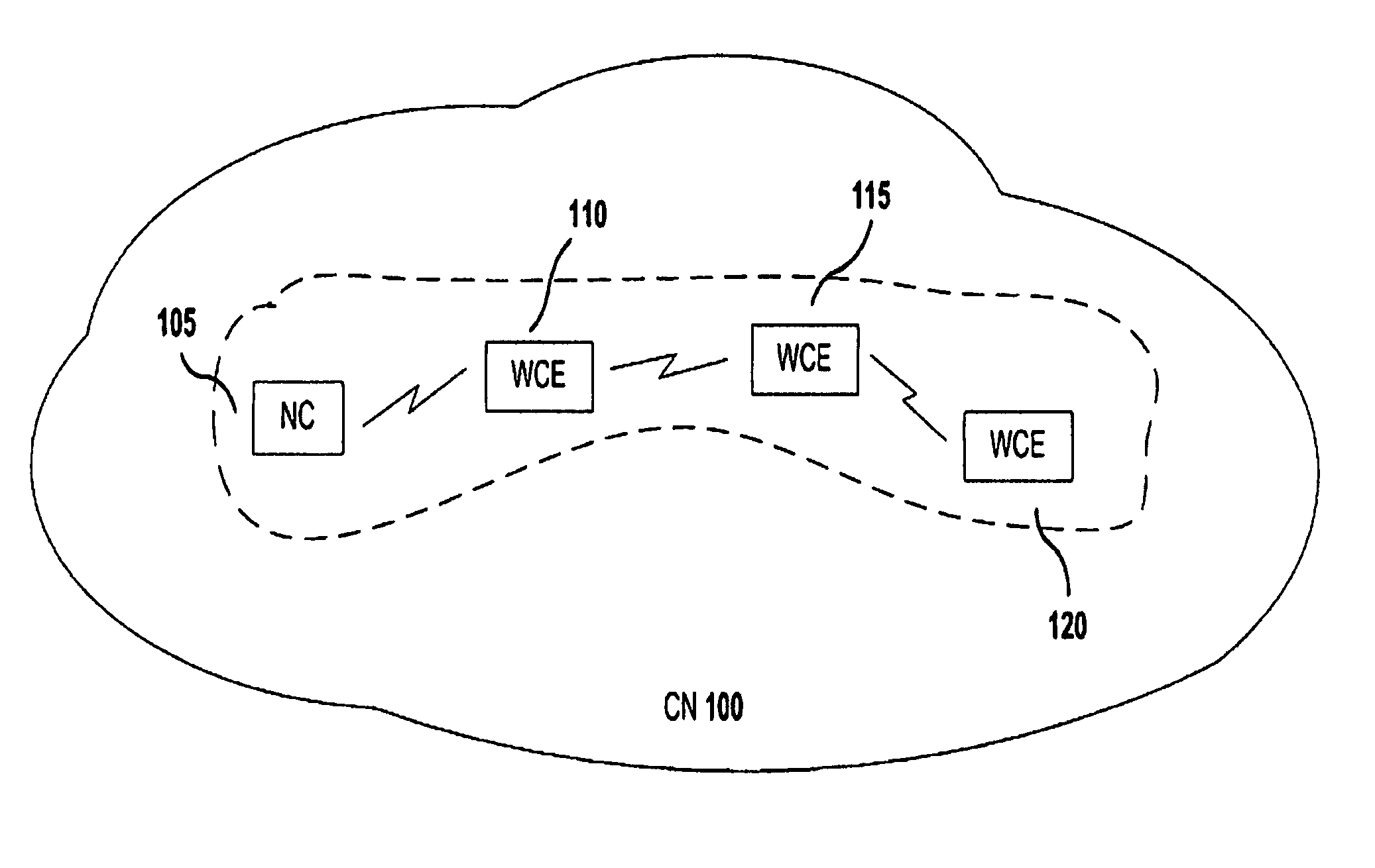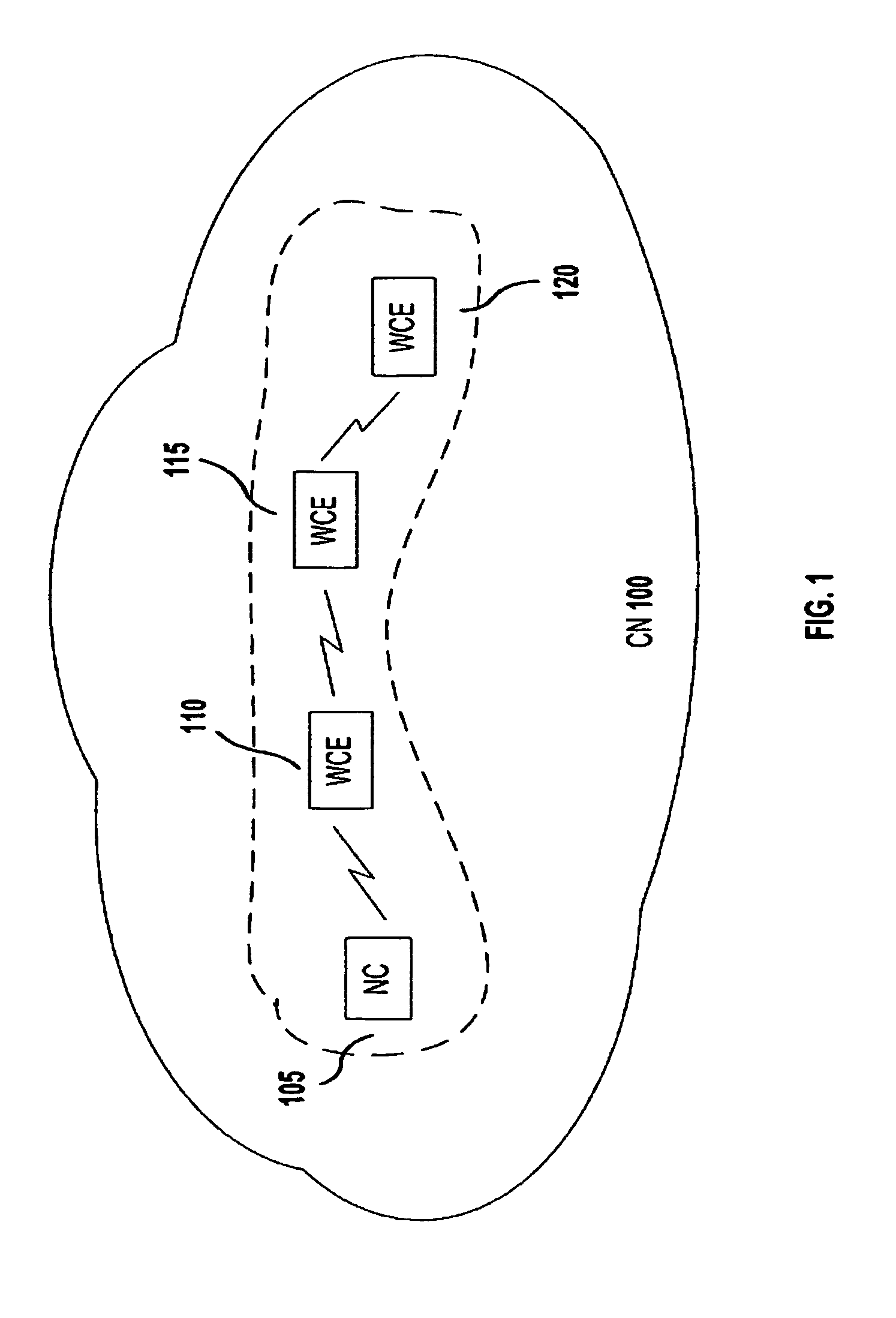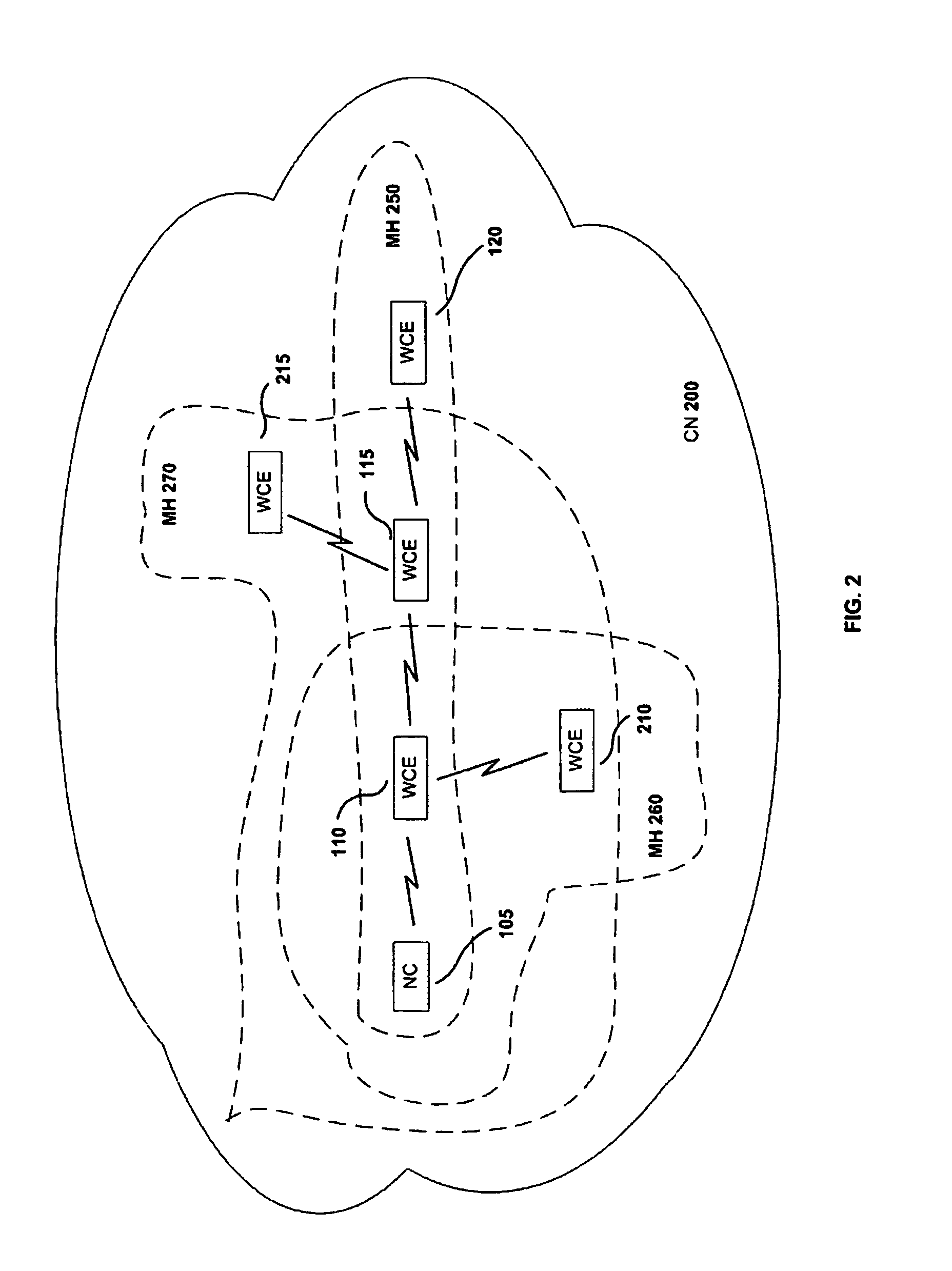Method for selective distribution of communications infrastructure
a technology of infrastructure and communications network, applied in the field of communications network operation, can solve the problems of large number of infrastructure equipment required, huge cost of deploying communications infrastructure units such as access points, wireless terminal points and base transceivers, and prohibitive costs of deploying such communications systems
- Summary
- Abstract
- Description
- Claims
- Application Information
AI Technical Summary
Problems solved by technology
Method used
Image
Examples
embodiment 1
Distributing Infrastructure Functions
[0059]With reference to FIG. 1, a communications network (CN) (100) in accordance with the current invention is illustrated. CN (100) comprises a network controller (NC) (105) and a single or plurality of wireless communications entities (WCE) (110), (115) and (120).
[0060]NC (105) is representative of a controller entity capable of coordinating network resources, provisioning and configuring WCEs, such as WCE (110), (115) and (120), and coordinating communications flows among them. WCEs are representative of communications devices such as wireless access points and mobile terminals, capable of transmitting and receiving communications traffic.
[0061]In accordance with the invention for selective distribution of infrastructure functions, WCEs of CN (100) are organized in a multihop configuration, heretofore referred to as multihop chain. Each multihop chain of WCEs is connected to NC (105). Consequently, NC (105) communicates with WCEs over interme...
embodiment 2
Interconnection of WCEs
[0068]FIG. 2 is illustrative of a communications network CN (200) comprising a plurality of WCEs (110), (115), (120), (210) and (215). Each WCE is constituent of a single or plurality of logical multihop chains (MH) (250), (260) and (270). The WCEs are communicably coupled by wireless means. The coupling may be based on any single or plurality of wireless technologies such as Bluetooth, IEEE 802.11, IEEE 802.16, GPRS and WCDMA. The present invention of selective distribution of functions is applicable in all cases of wireless coupling means.
[0069]In accordance with the invention, each MH (250), (260) and (270) represent a distinct logical entity managed by NC (105). For instance, WCE (110) and (210) of MH (260) may be wireless cameras that are representative of the surveillance assets of a security organization with a centralized control entity in NC (105). As another example, WCE (110), (115) and (215) of MH (270) may be mobile terminals that are representati...
embodiment 3
Sequence of Switching Operations
[0074]The multihop chain configurations of the present invention comprise a network controller and WCEs coordinating their infrastructure functions (IF) and client functions (CF) operations in respective IF-mode and CF-mode. FIG. 3 is illustrative of a sequence of coordinated operations (300) among multihop chains MH (250), (260) and (270) of CN (200). WCE (110), (115) and (120) constitute MH (250). WCE (110) and (210) constitute MH (260). WCE (110), (115) and (215) constitute MH (270).
[0075]In the current embodiment, NC (105) has distributed infrastructure functions and associated parameters to each WCE of the multihop chains MH (250), (260) and (270). The WCEs are also made aware of coordination schedules for communications within a single or plurality of multihop chains.
[0076]In a time period (310), communications are conducted within MH (250). Here in a step (314), NC (105) operates in IF-mode and communicates with WCE (110), which operates in CF-...
PUM
 Login to View More
Login to View More Abstract
Description
Claims
Application Information
 Login to View More
Login to View More - R&D
- Intellectual Property
- Life Sciences
- Materials
- Tech Scout
- Unparalleled Data Quality
- Higher Quality Content
- 60% Fewer Hallucinations
Browse by: Latest US Patents, China's latest patents, Technical Efficacy Thesaurus, Application Domain, Technology Topic, Popular Technical Reports.
© 2025 PatSnap. All rights reserved.Legal|Privacy policy|Modern Slavery Act Transparency Statement|Sitemap|About US| Contact US: help@patsnap.com



